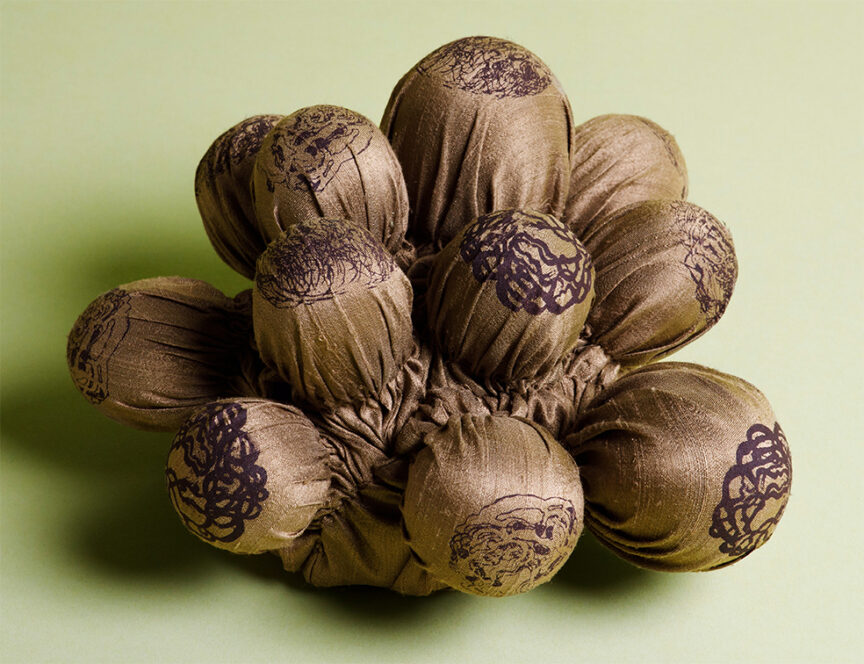In Tiina Vainio’s exhibition, a variety of printmaking techniques are combined in an open-minded and creative way, incorporating elements such as paper cutting. The graphic prints form three-dimensional works that take over the gallery space. Lush and vibrant, the pieces create a breathing whole, blending hanging elements from the ceiling with wall-mounted works. The central theme is moss — those ancient, slow-growing plants whose green glow softens even the hardest stone. Moss-like plants were likely among the first to appear on land, and soon they dominated the Earth’s vegetation. In myths of the world’s creation, a goldeneye lays its eggs on a mound — perhaps a soft mossy one.
Mosses are self-sufficient, resilient, and sensitive to damage. They rely on water. Their coexistence with trees is harmonious — trees offer shade and protection from drying out. In Japan, a moss-covered garden is an ideal, and people even take moss walks. Mosses act like a softening layer, cushioning the hard world and cloaking rocks and crags.
The materiality and dimensions of the artworks — soft spirals, silky surfaces, delicate paper elements, and rich colors — invite viewers to come closer, engaging the senses and evoking a tactile gaze. The works also trace pathways to 19th-century landscape painting, particularly forest imagery, which Vainio reinterprets using the monotype technique. Other works zoom in deeper, closer — into the mysterious, even fairytale-like world of mossy mounds, plants, and tiny organisms.
Tiina Vainio, based in Turku, is a trained painter and printmaker. Alongside traditional fine art practices, she has worked in community art and stage design. Her works are held in several major collections (including the Finnish State Art Collection, the Museum of Contemporary Art KIASMA, Kone Foundation, the cities of Turku and Tampere, and the Turku Art Museum). She has also created numerous public artworks and has been active in artist organizations. Vainio’s art often explores themes related to nature, human environments, history, and the dimensions of time. Her practice includes gestures that invite a posthumanist perspective and awaken ecological sensitivity.

 Suomi
Suomi Svenska
Svenska